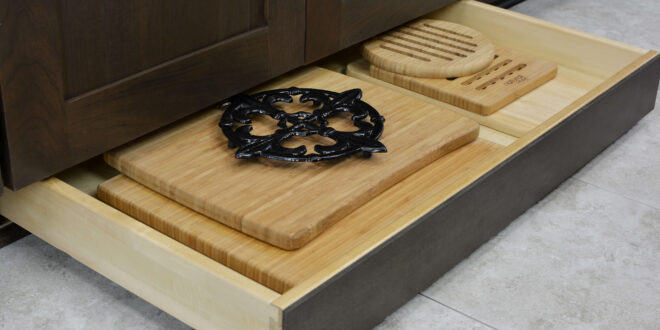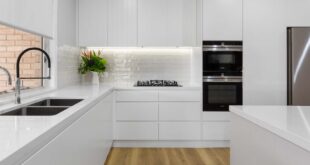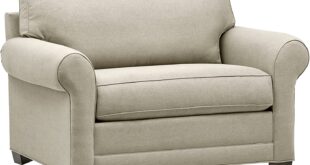Taming the Cutting Board Chaos: A Kitchen Organizer’s Guide
Let’s face it, cutting boards are indispensable kitchen tools. We rely on them for everything from prepping vegetables for a vibrant salad to carving a juicy roast. But these essential workhorses often become a source of clutter, lurking on countertops, precariously stacked in cabinets, or haphazardly leaning against the backsplash. The quest for efficient cutting board storage solutions is a challenge faced by home cooks everywhere.
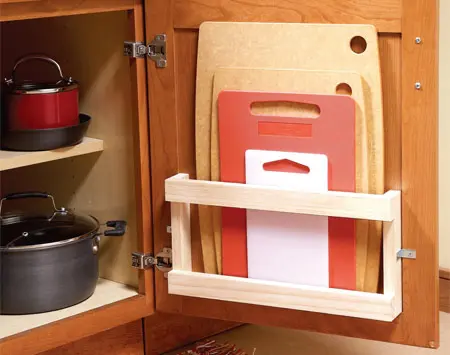
If you’re tired of the cutting board conundrum, you’ve come to the right place. This comprehensive guide will explore a wide range of practical and stylish storage ideas, helping you declutter your kitchen and keep your cutting boards organized and easily accessible. We’ll delve into different types of storage options, from space-saving organizers to DIY projects, ensuring you find the perfect fit for your kitchen’s unique needs and your personal style. Say goodbye to cutting board chaos and hello to a streamlined, efficient cooking space!
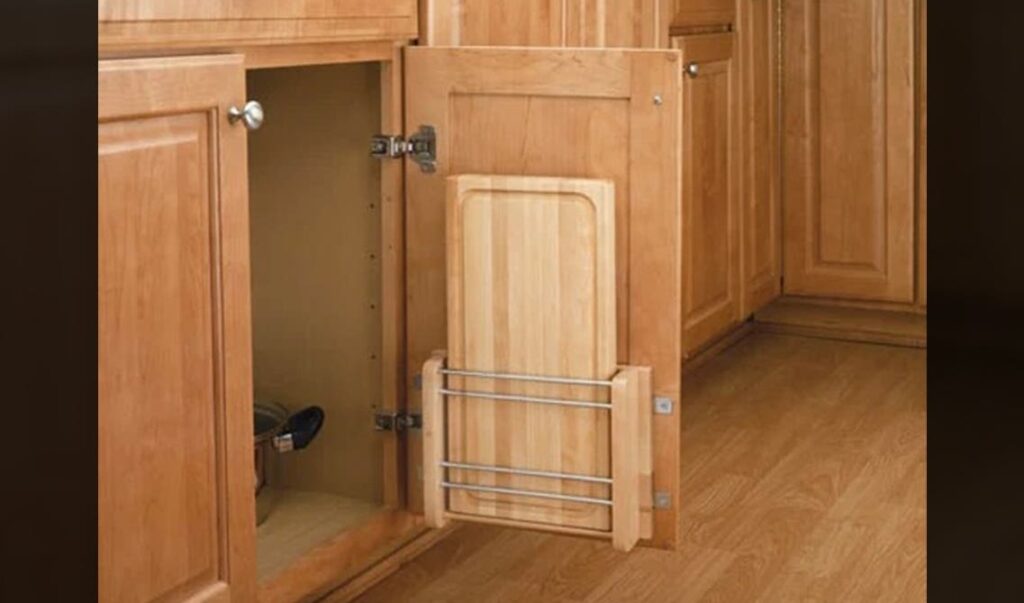
Understanding Your Cutting Board Needs: A Prerequisite to Organization
Before diving into storage solutions, it’s crucial to assess your cutting board collection and consider your kitchen layout. This preliminary evaluation will guide you toward the most effective and personalized organization strategy.

Inventory Time: How Many Cutting Boards Do You Really Need?
The first step is taking stock of your cutting board inventory. Do you have a collection of various sizes and materials? Consider the purpose of each board. Perhaps you have a large wooden board for carving meats, a smaller plastic board for vegetables, and a dedicated board for preparing raw poultry to prevent cross-contamination. Determining the function of each board will help you decide which ones are essential and which might be candidates for donation or disposal.
A good rule of thumb is to have at least three cutting boards: one for raw meats, one for cooked foods, and one for fruits and vegetables. If you frequently cook meals requiring extensive prep work, you might benefit from having a few extra boards on hand. However, avoid hoarding boards you rarely use. An excessive collection can quickly lead to clutter and overwhelm your storage space. Assess your needs honestly and pare down your collection to the essentials.
Kitchen Geography: Evaluating Your Space and Layout
Next, analyze your kitchen’s layout and identify potential storage areas. Consider the available space in your cabinets, drawers, pantry, and on your countertops. Are you working with a small apartment kitchen or a spacious gourmet setup? The amount of available space will significantly impact the type of storage solutions you can implement.
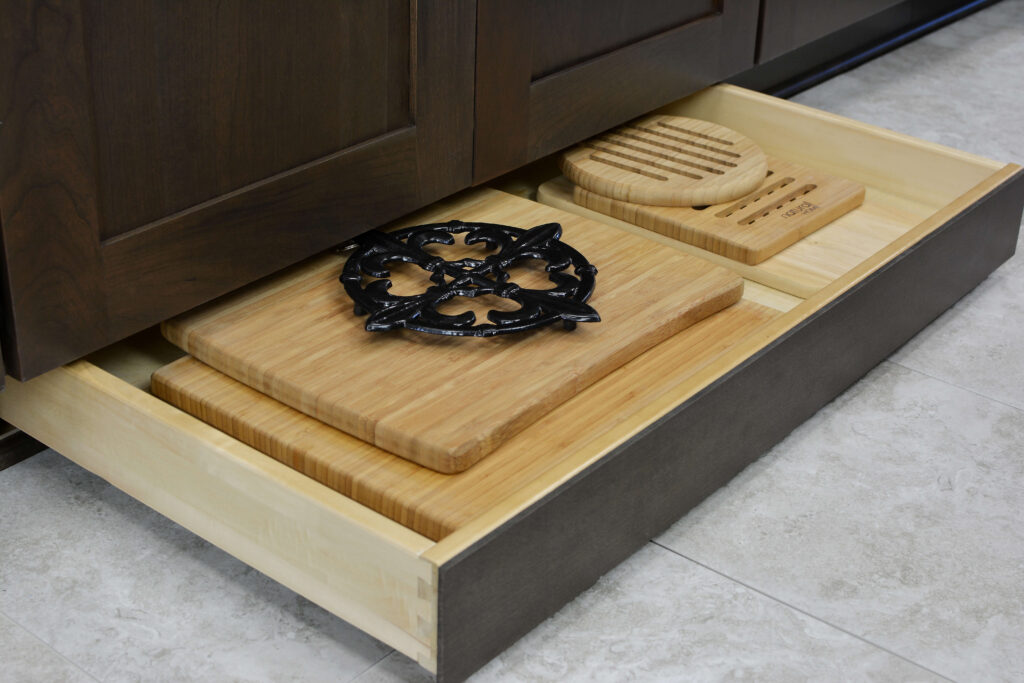
Think about the proximity of your prep area to your stove and sink. Ideally, your cutting boards should be easily accessible while you’re cooking. If you have limited countertop space, consider vertical storage options that maximize vertical space. If you have deep cabinets, drawer dividers or pull-out organizers can help you make the most of the available depth. Take note of any underutilized spaces, such as the area above the refrigerator or the side of a cabinet, which could be repurposed for cutting board storage.
Vertical Victories: Maximizing Space with Upright Storage
When countertop and cabinet space is limited, vertical storage is your best friend. These solutions utilize vertical space to keep your cutting boards organized and within easy reach. Here are some popular vertical storage options:
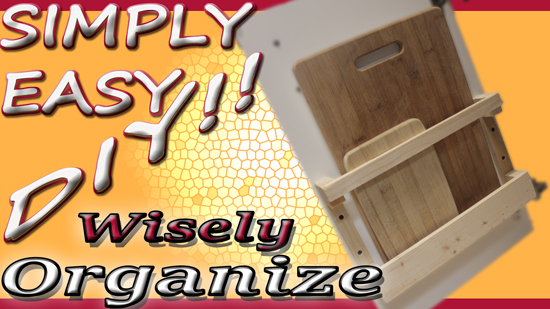
Cabinet Door Organizers: A Hidden Storage Gem
Cabinet door organizers are a discreet and efficient way to store cutting boards. These organizers typically consist of metal or plastic racks that attach to the inside of your cabinet doors using screws or adhesive strips. They provide a convenient place to store cutting boards without taking up valuable shelf space. Cabinet door organizers are particularly useful for storing thinner cutting boards or baking sheets.
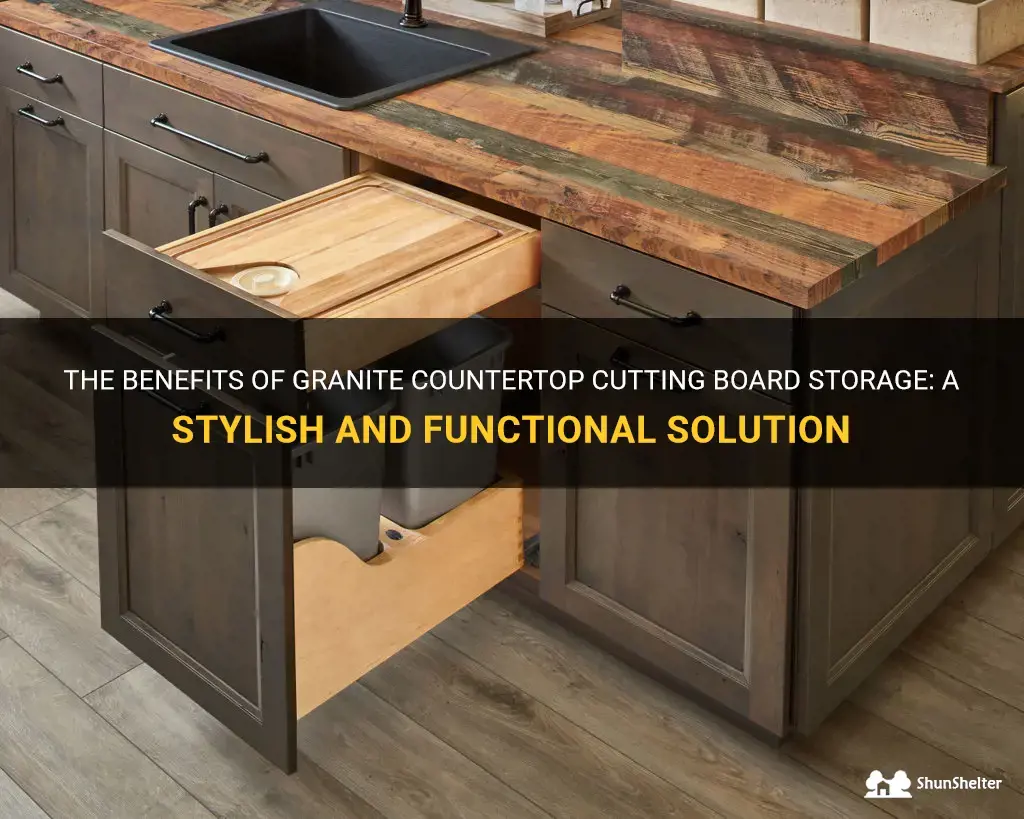
Before installing a cabinet door organizer, measure the inside of your cabinet door to ensure a proper fit. Consider the thickness of your cutting boards and choose an organizer with adequate spacing. When installing the organizer, be sure to follow the manufacturer’s instructions carefully to avoid damaging your cabinet door.
Over-the-Door Racks: An Accessible and Versatile Option
Similar to cabinet door organizers, over-the-door racks hang over the top of your cabinet door, providing a convenient storage solution for cutting boards. These racks are typically made of metal and feature multiple slots or compartments for holding boards of various sizes. Over-the-door racks are easy to install and require no drilling or hardware. Simply hang them over your cabinet door and you’re ready to go.
One of the advantages of over-the-door racks is their versatility. They can be used to store cutting boards, baking sheets, lids, or even cleaning supplies. However, keep in mind that over-the-door racks can add bulk to your cabinet door, potentially making it difficult to close properly. Choose a rack that is specifically designed for your cabinet door thickness to ensure a secure and comfortable fit.
Wall-Mounted Racks: A Stylish and Functional Display
For a more permanent and stylish solution, consider wall-mounted racks. These racks are typically made of metal, wood, or plastic and are attached to the wall using screws. They provide a dedicated space for storing cutting boards and can even serve as a decorative element in your kitchen. Wall-mounted racks come in a variety of styles and sizes, allowing you to choose one that complements your kitchen décor.
When installing a wall-mounted rack, be sure to use appropriate anchors to ensure it can support the weight of your cutting boards. Consider the location of the rack carefully, choosing a spot that is easily accessible and out of the way of foot traffic. Wall-mounted racks can be a great way to showcase your favorite cutting boards and add a touch of personality to your kitchen.
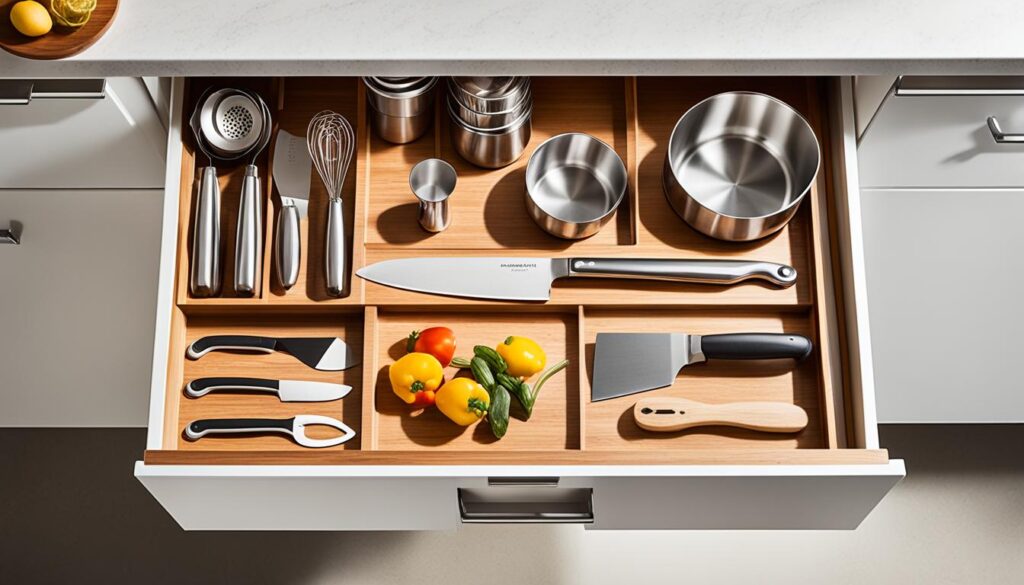
Standalone Cutting Board Holders: A Countertop Companion
If you prefer to keep your cutting boards within easy reach on your countertop, a standalone cutting board holder is a practical and convenient option. These holders are typically made of wood, metal, or plastic and feature slots or dividers for holding multiple cutting boards upright. Standalone holders come in a variety of styles and sizes, allowing you to choose one that fits your countertop space and complements your kitchen décor.
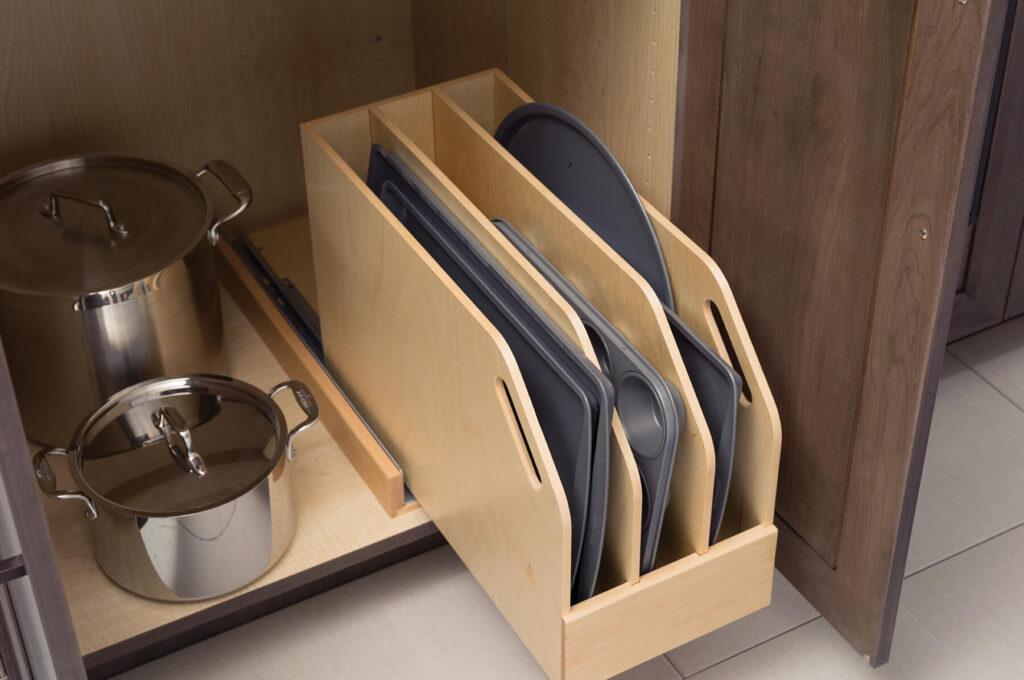
Look for a holder with a sturdy base to prevent it from tipping over. Consider the spacing between the slots to ensure they can accommodate your thickest cutting boards. Some holders also feature a built-in drip tray to catch any moisture from the boards, preventing water damage to your countertop.
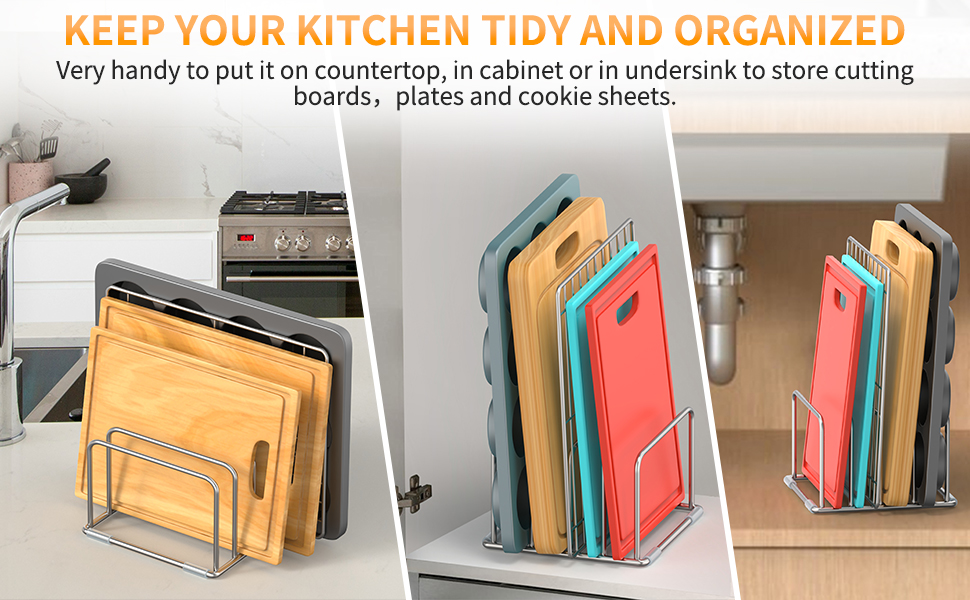
Horizontal Havens: Optimizing Cabinet and Drawer Space
If you have ample cabinet or drawer space, horizontal storage options can be a great way to keep your cutting boards organized and protected. These solutions utilize the horizontal space within your cabinets and drawers, maximizing storage capacity and keeping your boards out of sight.
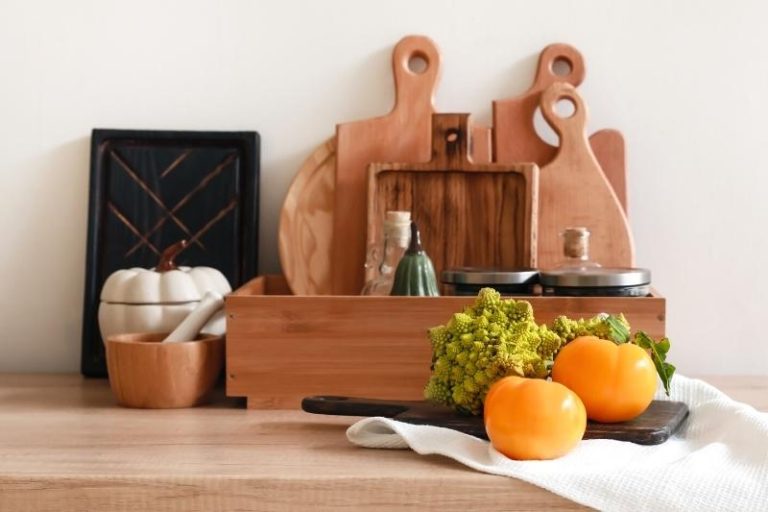
Drawer Dividers: A Customizable Organization Solution
Drawer dividers are a versatile and customizable way to organize your cutting boards within a drawer. These dividers typically consist of adjustable partitions that can be arranged to create compartments of various sizes. Drawer dividers allow you to separate your cutting boards from other items in the drawer, preventing them from getting scratched or damaged.
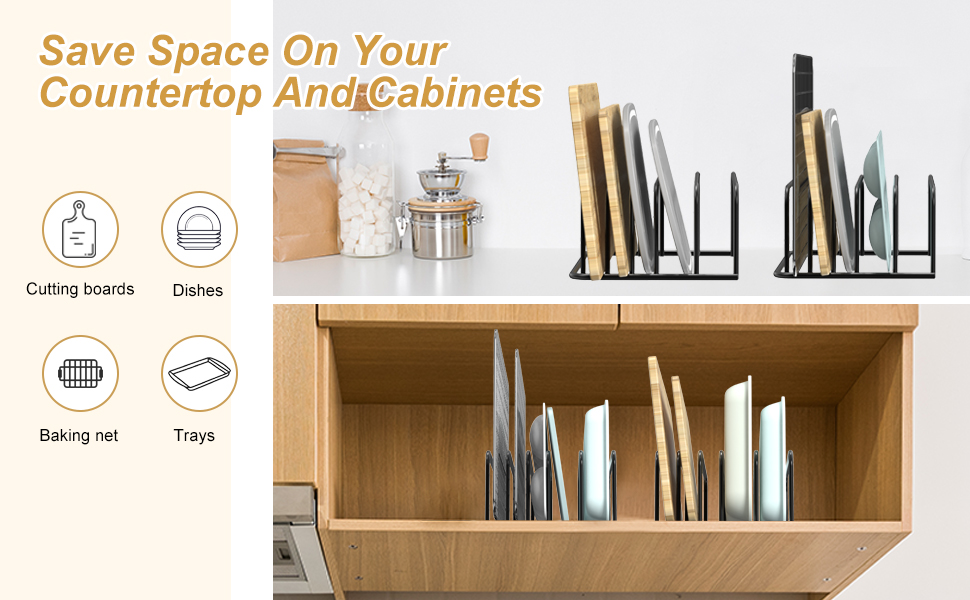
When choosing drawer dividers, consider the size and depth of your drawers. Look for dividers that are adjustable to accommodate different sized cutting boards. Some dividers also feature non-slip bottoms to prevent them from sliding around when the drawer is opened or closed.
Pull-Out Organizers: Maximizing Accessibility and Convenience
Pull-out organizers are a great way to make the most of deep cabinets. These organizers consist of a sliding platform that pulls out from the cabinet, allowing you to easily access your cutting boards. Pull-out organizers are particularly useful for storing large or heavy cutting boards that would be difficult to reach in the back of a cabinet.
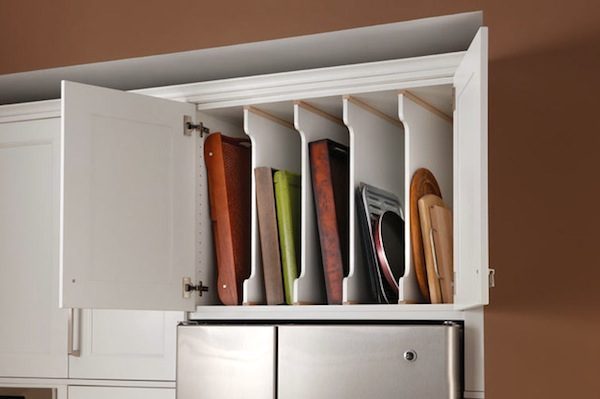
When choosing a pull-out organizer, consider the weight capacity and the size of the platform. Look for an organizer with smooth-gliding rails and a sturdy construction. Some organizers also feature adjustable dividers to further customize the storage space.
Cabinet Shelves: A Simple and Affordable Solution
If you have existing cabinet shelves, you can easily adapt them to store your cutting boards. Simply dedicate a shelf or a portion of a shelf to your cutting boards, stacking them neatly on top of each other. To prevent the boards from sliding around, consider using non-slip shelf liners or rubber bands to secure them in place.
For added organization, you can use shelf dividers to create separate compartments for different sized cutting boards. This will help prevent the boards from getting mixed up and make it easier to find the one you need.

DIY Cutting Board Storage: Unleashing Your Creativity
For those who enjoy a hands-on approach, DIY cutting board storage solutions offer a creative and personalized way to organize your kitchen. Here are a few inspiring DIY ideas:
Repurposed Magazine Racks: A Clever and Budget-Friendly Idea
Old magazine racks can be easily repurposed into stylish and functional cutting board holders. Simply clean and paint the magazine rack to match your kitchen décor and then place it on your countertop or mount it on the wall. The slots in the magazine rack will provide ample space for storing your cutting boards.
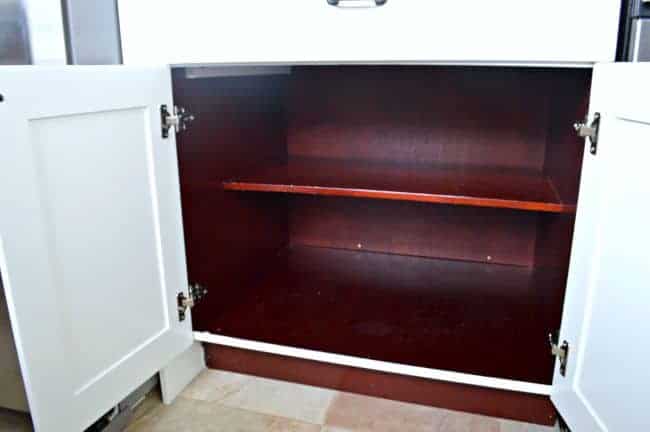
DIY Pegboard Organizer: A Customizable and Versatile Solution
Pegboards are a highly customizable and versatile storage solution. Simply mount a pegboard on your wall and then use hooks and pegs to create a storage system for your cutting boards. You can arrange the hooks and pegs to accommodate different sized boards and create a visually appealing display.
Upcycled Wooden Crates: A Rustic and Charming Storage Option
Wooden crates can be easily upcycled into rustic and charming cutting board holders. Simply sand and paint the crates to match your kitchen décor and then stack them on top of each other to create a tiered storage system. The crates will provide ample space for storing your cutting boards and add a touch of farmhouse charm to your kitchen.
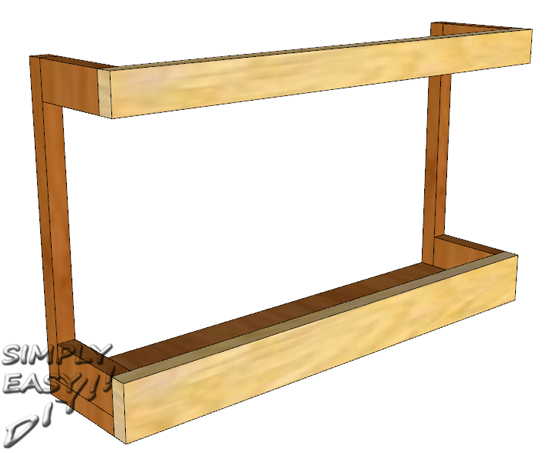
Material Matters: Considerations for Storing Different Types of Cutting Boards
The material of your cutting boards can influence the best storage methods. Wood, plastic, and bamboo cutting boards each have unique properties that require specific care and attention.
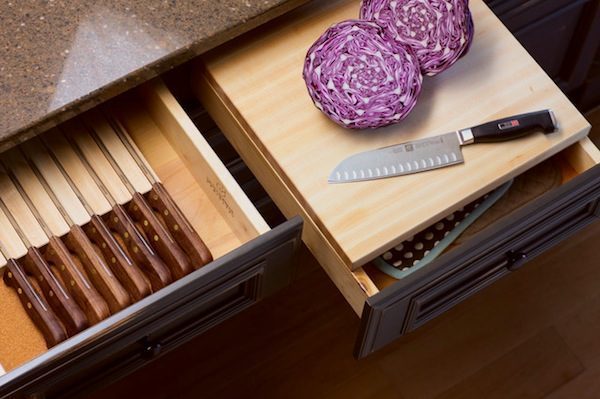
Wood Cutting Boards: Embracing Airflow and Avoiding Moisture
Wood cutting boards are prized for their durability and aesthetic appeal. However, they are susceptible to moisture damage and warping if not stored properly. It’s crucial to allow wood cutting boards to air dry completely after washing before storing them. Storing a damp wooden board can lead to mold growth and cracking.
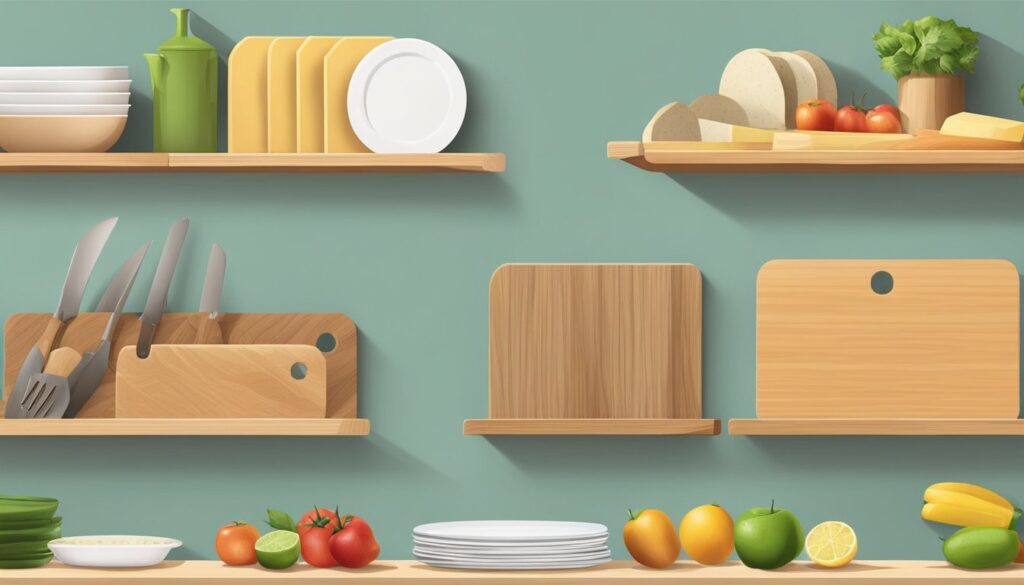
When storing wood cutting boards, prioritize airflow. Vertical storage is ideal, as it allows air to circulate around the board, preventing moisture buildup. Avoid storing wood cutting boards flat on top of each other, as this can trap moisture and promote warping. If you must store them horizontally, ensure there is adequate ventilation between the boards.
Periodically oiling your wood cutting boards with food-grade mineral oil will help to prevent them from drying out and cracking. This will also enhance their natural beauty and extend their lifespan.
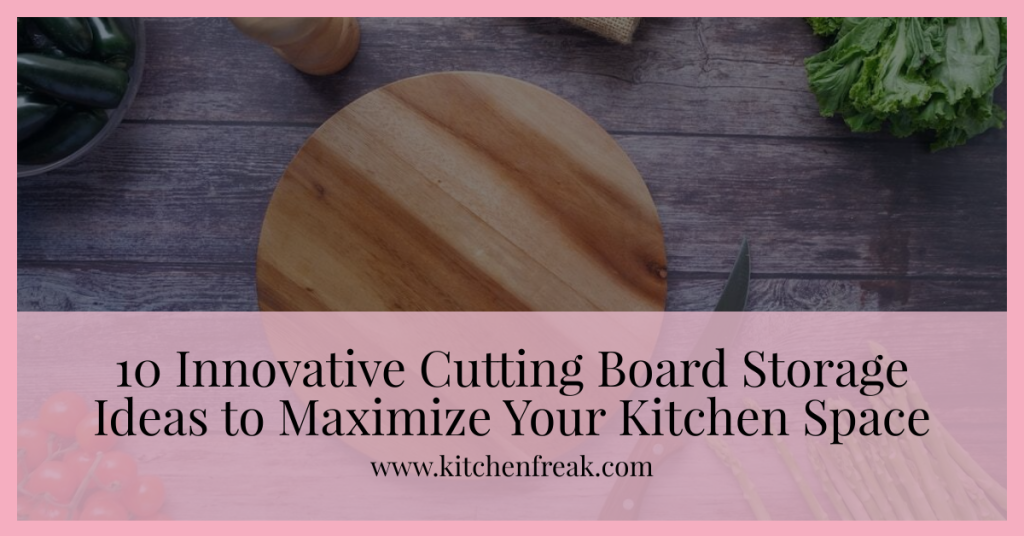
Plastic Cutting Boards: Easy Cleaning and Minimal Maintenance
Plastic cutting boards are known for their ease of cleaning and low maintenance. They are typically dishwasher safe and resistant to moisture damage. However, plastic boards can be prone to scratching, which can harbor bacteria.
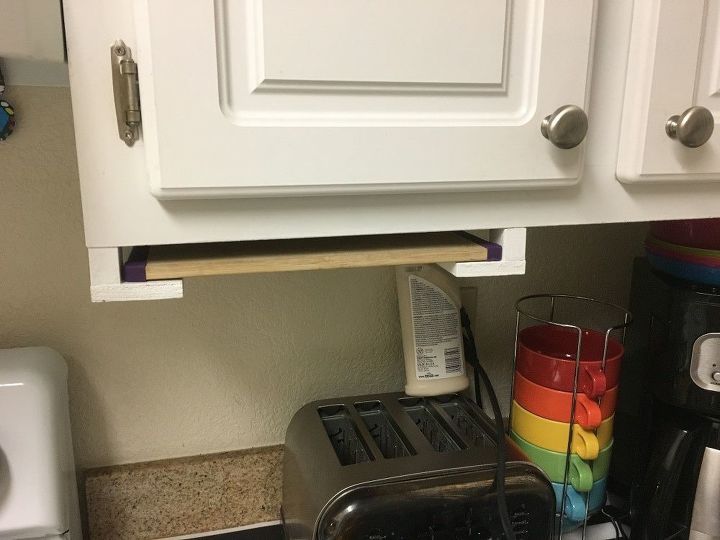
When storing plastic cutting boards, you don’t need to worry as much about airflow as you do with wood boards. However, it’s still a good idea to store them in a way that allows them to dry completely after washing. Vertical storage is a good option, but horizontal storage is also acceptable.
To prevent scratching, avoid storing plastic cutting boards with sharp objects. Consider using drawer dividers or shelf liners to protect them from damage.
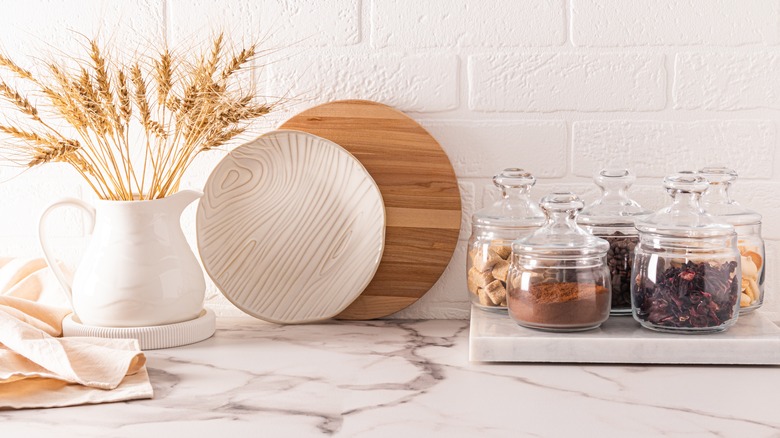
Bamboo Cutting Boards: A Sustainable and Durable Choice
Bamboo cutting boards are a sustainable and durable alternative to wood cutting boards. They are naturally antimicrobial and resistant to moisture damage. However, like wood boards, bamboo boards can warp if not stored properly.
When storing bamboo cutting boards, follow the same guidelines as for wood boards. Allow them to air dry completely after washing before storing them. Prioritize airflow and avoid storing them flat on top of each other. Periodically oiling your bamboo boards with food-grade mineral oil will help to prevent them from drying out and cracking.
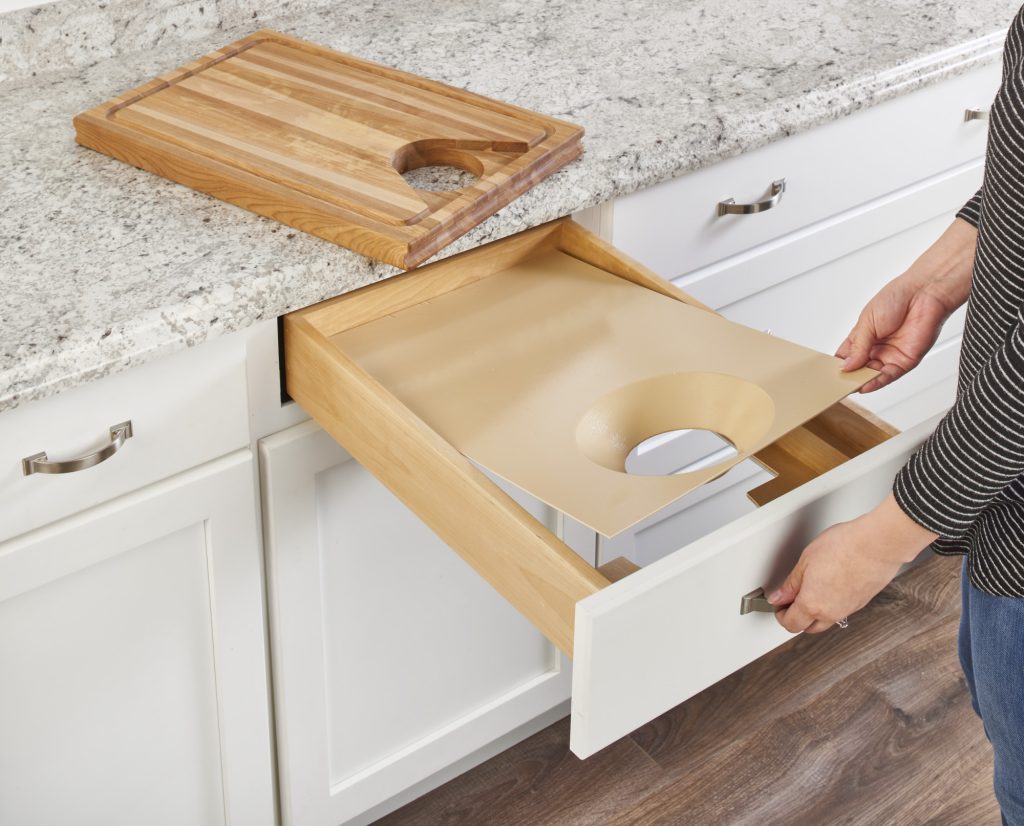
Beyond Storage: Maintaining Your Cutting Boards for Longevity
Proper storage is only one aspect of maintaining your cutting boards. Regular cleaning and sanitation are essential for preventing the spread of bacteria and ensuring the longevity of your boards. Here are some tips for cleaning and caring for your cutting boards:
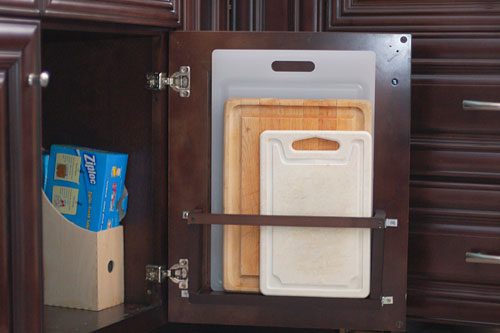
Cleaning After Every Use: A Fundamental Hygiene Practice
Wash your cutting boards thoroughly with hot, soapy water after each use. Use a scrub brush to remove any food particles or residue. Rinse the boards well and allow them to air dry completely before storing them.
For plastic cutting boards, you can also wash them in the dishwasher. However, be sure to place them on the top rack to prevent them from melting or warping.
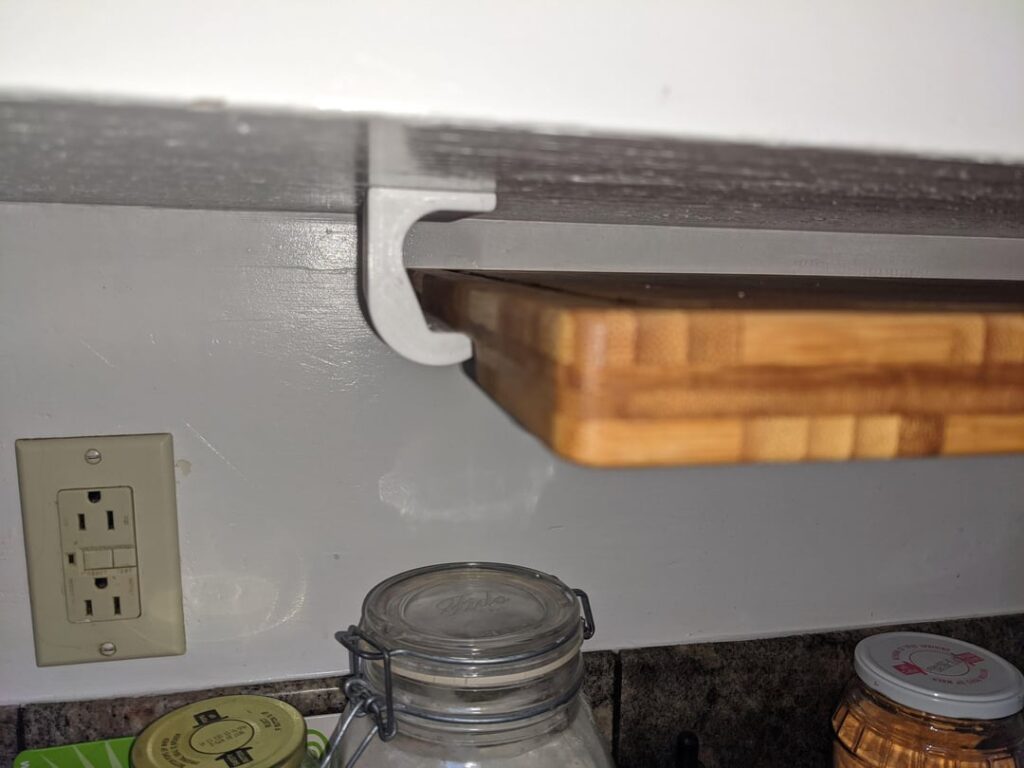
Sanitizing Your Cutting Boards: Eliminating Bacteria and Preventing Cross-Contamination
To sanitize your cutting boards, you can use a solution of bleach and water. Mix one tablespoon of bleach with one gallon of water and apply the solution to the boards. Let the solution sit for a few minutes and then rinse the boards thoroughly with hot water.
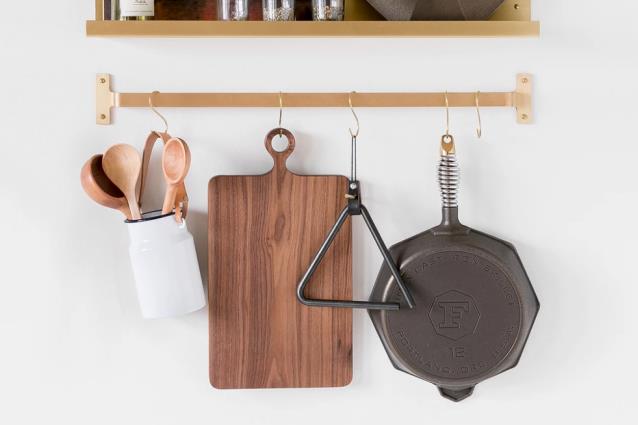
Alternatively, you can use a solution of vinegar and water. Mix equal parts vinegar and water and apply the solution to the boards. Let the solution sit for a few minutes and then rinse the boards thoroughly with hot water.
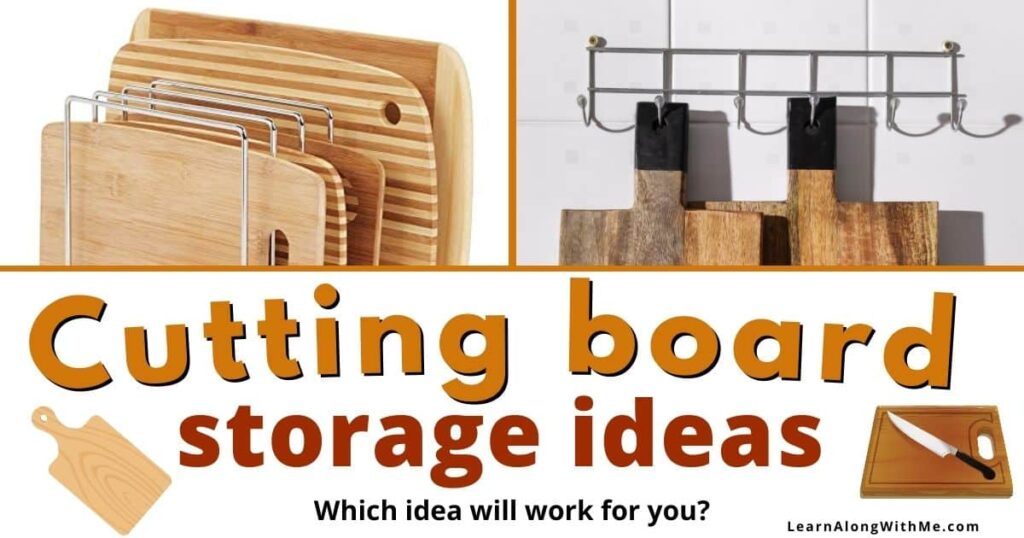
Dealing with Stains and Odors: Restoring Your Cutting Boards to Their Former Glory
If your cutting boards have stains or odors, you can try using a mixture of baking soda and lemon juice. Sprinkle baking soda on the boards and then squeeze lemon juice over the baking soda. Let the mixture sit for a few minutes and then scrub the boards with a scrub brush. Rinse the boards well and allow them to air dry completely.
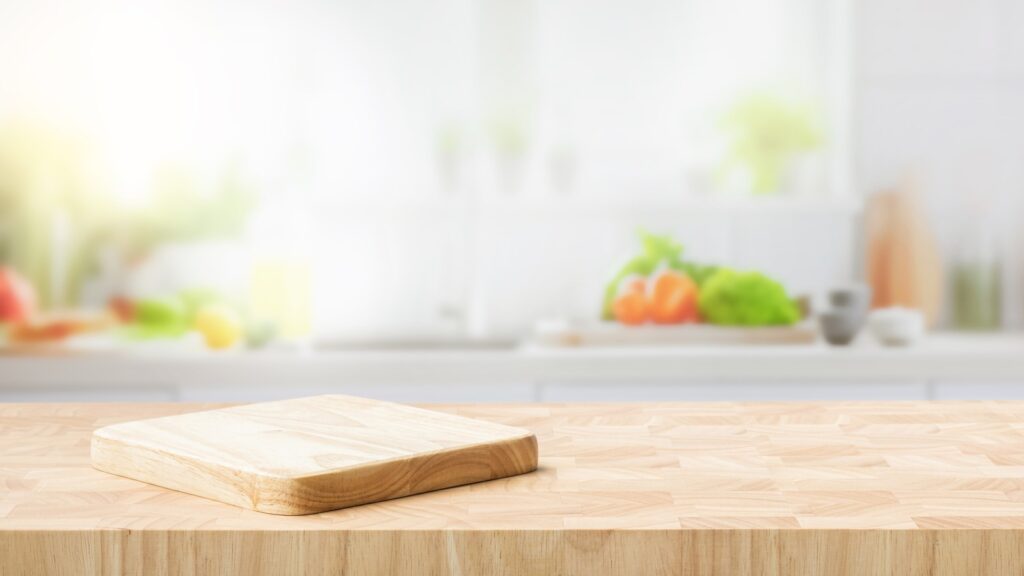
For stubborn stains, you can try using a paste of baking soda and water. Apply the paste to the stains and let it sit for a few hours or overnight. Then, scrub the boards with a scrub brush and rinse them well.
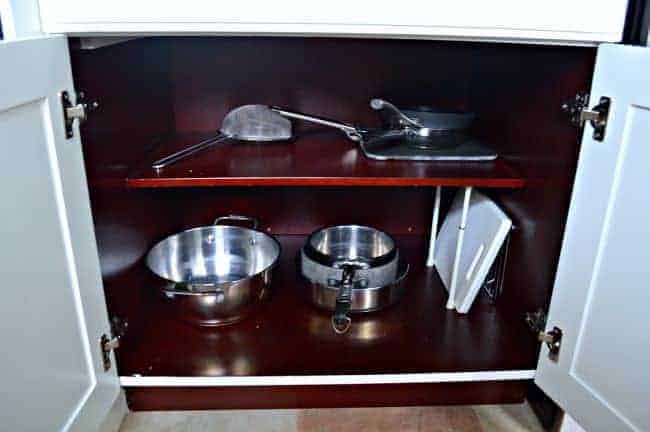
Choosing the Right Cutting Board: A Foundation for Efficient Storage
The type of cutting boards you own can directly impact your storage needs. Investing in the right cutting boards from the start can make organizing them much easier. Here are a few factors to consider when choosing cutting boards:
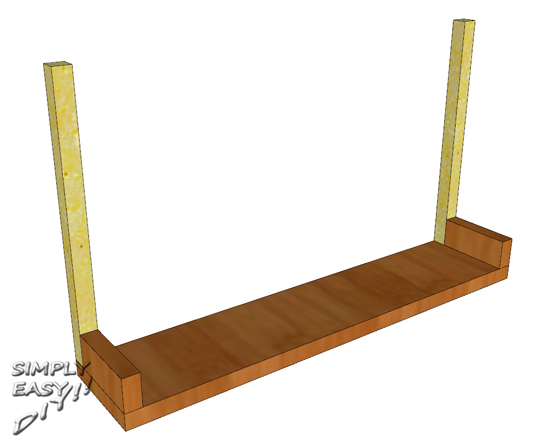
Size Matters: Selecting Boards That Fit Your Storage Space
Consider the size of your available storage space when choosing cutting boards. If you have limited space, opt for smaller, more compact boards. If you have ample space, you can choose larger boards that are better suited for preparing larger meals.
A set of graduated cutting boards can be a great option for those with limited storage space. These sets typically include boards of varying sizes that nest together for compact storage.
Material Choices: Balancing Durability and Maintenance
Consider the material of the cutting boards when making your selection. Wood, plastic, and bamboo boards each have their own advantages and disadvantages. Choose a material that is durable, easy to clean, and compatible with your storage preferences.
Consider the knife-friendliness of the material as well. Some materials, such as glass or marble, can dull your knives quickly. Wood and plastic boards are generally considered to be more knife-friendly.
Features and Functionality: Enhancing Your Food Prep Experience
Look for cutting boards with features that enhance your food prep experience. Some boards have built-in grooves to catch juices, preventing them from spilling onto your countertop. Others have non-slip feet to prevent them from sliding around while you’re cutting.
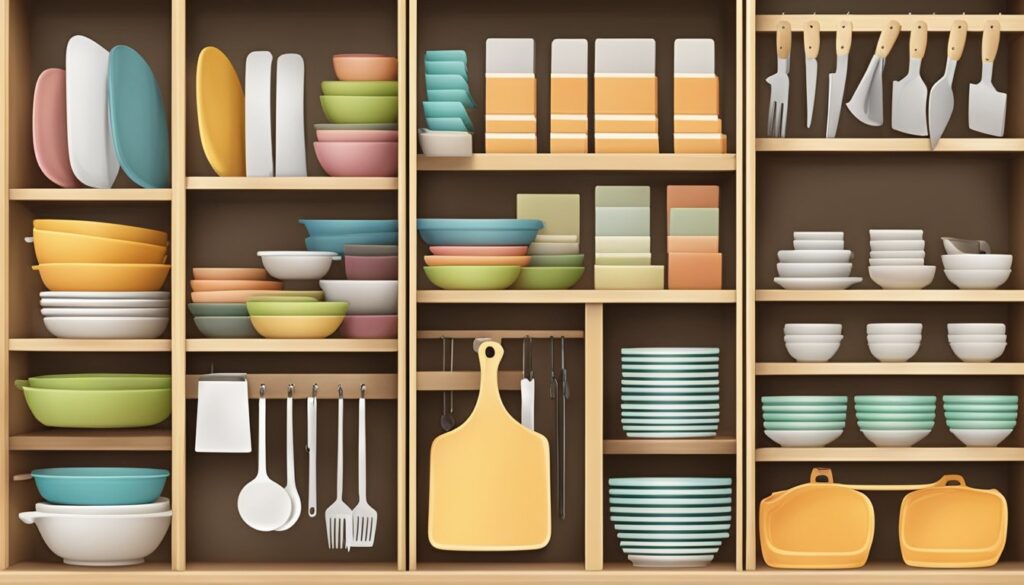
Consider investing in a cutting board with a handle for easy carrying and maneuvering. This can be particularly useful for large or heavy boards.
Conclusion: A Well-Organized Kitchen, One Cutting Board at a Time
Organizing your cutting boards is an essential step towards creating a functional and clutter-free kitchen. By implementing the storage solutions and maintenance tips outlined in this guide, you can transform your cutting board chaos into a streamlined and efficient cooking experience. Remember to assess your needs, evaluate your space, and choose storage options that complement your kitchen’s style and your personal preferences.
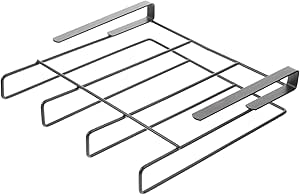
So, go ahead, chop ’til you drop, knowing that your cutting boards have a designated place to call home. With a little planning and effort, you can create a kitchen that is both beautiful and functional, making cooking a joy rather than a chore. Happy organizing!
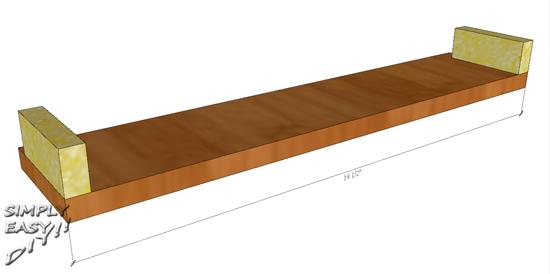
 Nimila
Nimila
